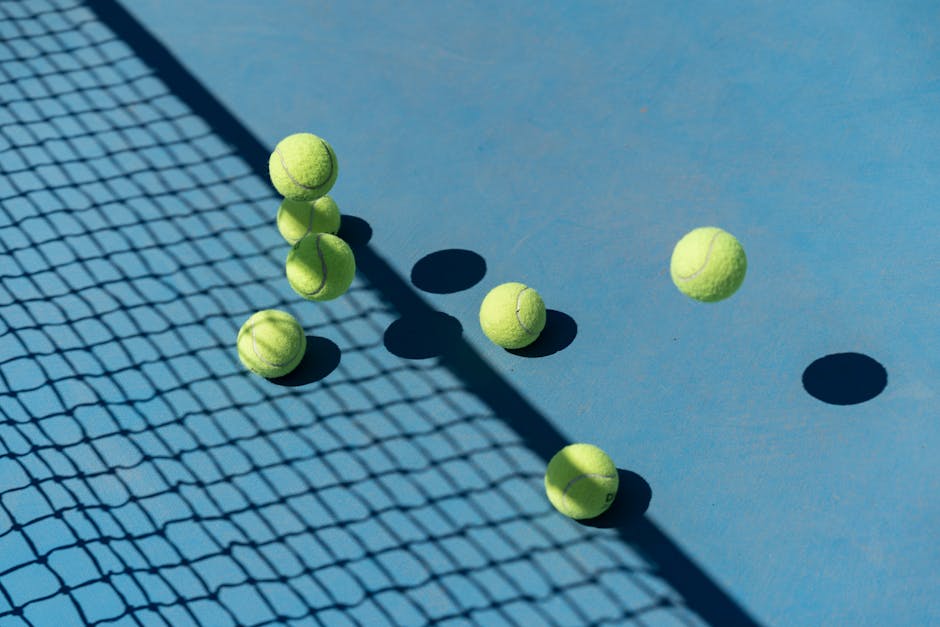423 E. Roosevelt Road, Lombard, IL 60148
630 895 8383

If you’re wondering how to attach tennis balls on medical walkers, you’ve come to the right place. Here is a quick overview of the process:
Adding tennis balls to a walker might seem unusual at first, but it offers several benefits:
In summary, using tennis balls on walkers can enhance mobility and make navigating various terrains safer and easier.

Attaching tennis balls to walkers might seem unusual at first, but it’s a practical solution that offers multiple benefits. Here’s why you might want to consider this simple modification:
Walkers come with rubber tips that can sometimes be slippery or wear out quickly. Tennis balls, with their larger surface area and felt covering, provide better grip and stability. This makes the walker less likely to slide unexpectedly, providing a more secure support for the user.
The felt on tennis balls increases traction, which helps in preventing slips. This is especially useful on smooth surfaces like tile or hardwood floors. The increased friction can make it easier to control the walker, ensuring safer movement.
Rubber tips on walkers can be quite noisy, especially on hard surfaces. Tennis balls are softer and can significantly reduce the noise generated when the walker is moved around. This can be a relief for both the user and those around them.
“The rubber tips that come standard on many walkers can be noisy, especially on hard floors like tile or wood. Tennis balls are softer and quieter.” – Quora
Rubber tips can leave marks on floors, particularly on hardwood. Tennis balls, being softer, are less likely to cause damage. They help protect floors from scratches and scuffs, making them a better choice for indoor use.
Tennis balls can make it easier to glide the walker across different surfaces, including carpets and rugs. The smooth surface of the tennis ball reduces friction, making it easier for the walker to move smoothly. This can be particularly helpful for those who have difficulty lifting the walker with each step.
“Tennis balls make walkers slide a little easier, keep walkers from sinking into the dirt, keep walker legs from getting caught on carpet, and keep dirt from getting jammed up into the legs of walkers when the little plastic bottoms on those legs wear out.” – Quora
In summary, attaching tennis balls to your walker can improve stability, traction, and maneuverability while reducing noise and protecting your floors. This simple modification can make a significant difference in the daily use of your walker.
Next, we’ll explore how to attach tennis balls to your medical walker step by step.
Attaching tennis balls to your walker is easy and can make a big difference in stability and traction. Here’s a simple, step-by-step guide to help you get it done safely.
Secure the Tennis Ball
Place the tennis ball in a vise or hold it steady using another object. This keeps the ball from rolling around while you cut it.
Release the Air
Use a hammer and nail to puncture the tennis ball. Hammer the nail into the ball until you hear a hiss, which means the air is escaping. Remove the nail after this.
Cut an X Shape
Using a utility knife, cut an X shape starting from the hole you made. Each cut should be long enough to fit the walker leg but not too large that the ball becomes loose.
Check the Hole Size
Make sure the hole size fits the width of the walker’s legs. The cuts should be slightly smaller than the walker legs so that the ball fits snugly.
Attach the Tennis Ball
Push the tennis ball onto the walker’s leg through the X-shaped cut. Pull the walker leg back slightly to open the flaps, then push it in to ensure the ball is securely placed.
Repeat for the Other Leg
Follow the same steps to attach the second tennis ball to the other leg of the walker.

Pro Tip: Pre-cut tennis balls are available if you prefer not to cut them yourself. These can be found at most medical supply stores.
By following these steps, you’ll have tennis balls securely attached to your walker, providing better stability and smoother movement.
Next, we’ll discuss alternatives to tennis balls for walkers and see which options might work best for you.
While tennis balls are popular for walkers, there are several other options that might suit your needs better. Here are some alternatives to consider:
Glide balls are a great option if you want something more durable than tennis balls. They are designed to fit snugly on walker legs and provide smooth movement over various surfaces. Unlike tennis balls, glide balls are often made from materials that last longer and require less frequent replacement.
Walker coasters offer an easy gliding experience. These coasters are designed to move smoothly across different surfaces, including carpets and tiles. They are typically easier to install than tennis balls and can be a stylish alternative.
If you’re looking to add a personal touch to your walker, decorative glides are a fantastic choice. These glides come in various colors and designs, allowing you to express your personality while improving the functionality of your walker. Plus, they are made to be durable and long-lasting.
Glide skis are another excellent alternative. They work similarly to skis, allowing the walker to glide effortlessly over surfaces. Glide skis are particularly useful for navigating uneven terrain, making them ideal for both indoor and outdoor use.
If you like the idea of using tennis balls but don’t want the hassle of cutting them yourself, consider pre-cut tennis balls. These are available at most medical supply stores and come ready to attach to your walker. Pre-cut tennis balls offer the same benefits as DIY versions but save you time and effort.
Each of these alternatives offers unique benefits, so consider your specific needs and preferences when choosing the best option for your walker.
Next, we’ll answer some frequently asked questions about using tennis balls on walkers and explore other tips for enhancing your mobility aid.
To make your walker slide easier, consider using nylon glides or star glides. These are specially designed attachments that fit over the walker legs and provide a smooth, low-friction surface. Nylon glides are durable and work well on various surfaces, while star glides offer a more stable base with multiple contact points.
Pro Tip: Always ensure the glides are securely attached to prevent any wobbling.
If you’re looking for alternatives to tennis balls, here are some great options:
Adding tennis balls to chair legs can help reduce classroom noise and increase comfort. Here’s how you can do it:
Safety Tip: Always use caution when cutting the tennis ball to avoid injury.
By following these steps, you can easily attach tennis balls to chair legs, reducing noise and protecting floors from scratches.
Adding tennis balls to your medical walker can enhance its durability and aesthetics. While the primary benefit is increased stability and traction, tennis balls also help protect your floors from scratches and reduce noise. However, they do wear out over time, especially on rough surfaces. Regularly checking and replacing the tennis balls will ensure your walker remains safe and effective.
If you prefer a more stylish look, consider alternatives like decorative glides or pre-cut tennis balls. These options provide similar benefits without the DIY hassle and can add a personal touch to your walker.
At Monty’s Home Medical, we offer a wide range of mobility aids and accessories to help you maintain your independence and comfort. Visit our store to explore our selection and find the perfect solution for your needs.
By choosing the right accessories, you can ensure your walker is both functional and aesthetically pleasing, making your daily movements smoother and safer.